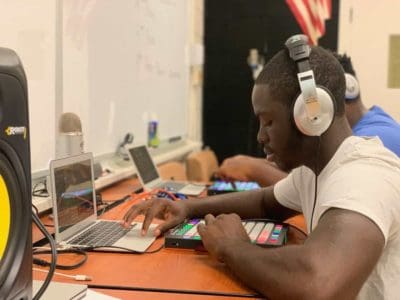
School closures in response to the pandemic led educators to make heroic efforts to provide their students with online learning experiences and continued connections with their teachers and classmates. This has placed a spotlight on the critical need for all students to have access at home to the devices and Internet connectivity required for online learning, as advocated by FCC Commissioner Jessica Rosenworcel and many others. A related critical issue also needs to be spotlighted: the lack of readiness of many educators to employ online teaching effectively.
In response to the sudden transition, many educators have moved their existing course materials online, provided live or recorded versions of their classroom lectures, and employed a social networking or discussion tool to enable interactions with and among students. While their efforts are to be commended, in many cases the effectiveness of the quickly implemented online courses has been limited.
Looking past the immediate crisis, there are differing scenarios for how the rapid increase in online learning might influence its future use. On the optimistic side, we might see an increased recognition of how online learning can extend and enhance students’ education, leading to the widespread implementation of high-quality online courses. Schools could then make further use of online learning to help meet social distancing requirements and provide additional learning opportunities and flexibility for their students.
On the pessimistic side, as described by Michael Horn, among others, the rush to online learning without adequate preparation could lead many to conclude that it is of minimal benefit, more frustrating than productive, and to be used only as a poor substitute when face-to-face learning is not possible.
In order to progress toward the optimistic scenario, we need to recognize that effective online learning involves more than just moving a course syllabus and lectures online, just as a successful movie involves more than just filming a live play. It involves changing the culture of the school, with new types of responsibilities for teachers, students and families, and new forms of interactions among them. It requires providing professional development, time and technology resources to enable educators to optimize students’ online learning experiences. It requires that educators become skilled at building the following, and more, into their online courses:
- A strong online presence and continuous connections with their students, using multiple forms of communication including video conferencing, real-time (synchronous) and discussion-forum (asynchronous) communications, along with collaboration and social media tools. These connections help keep students engaged and in touch with their teachers and classmates.
- Clear expectations, instructions and guidance, which are more critical when the teacher is not in the room to monitor students as they do their work. Done well, this can help students become more self-directed learners.
- Multiple resources to support learning, including “micro-lectures” that chunk the material into small, coherent modules; online videos, multimedia presentations, and readings; interactive online explorations and offline hands-on activities; and other resources appropriate for the content and the students. These provide students with alternative ways to learn and enable teachers to enrich the learning experience for all students.
- Modeling and facilitation of online exchanges in order to convey appropriate ways for students to interact and work collaboratively online. This helps students become effective online learners, communicators and collaborators.
- Approaches to personalized instruction for students, providing flexible pathways through the material, alternative means for students to complete and submit their work, and resources and tools for students with learning differences or learning disabilities. To do so, teachers also need processes to monitor students’ progress and identify when they need further support. This enables teachers to guide each student toward successfully meeting his or her learning goals.
- In general, a positive and constructive culture in which students are motivated to learn and also encourage and support their classmates’ learning. This type of culture is as important in an online course as in a face-to-face one but requires focused efforts to initiate and maintain in online environments.
In this optimistic view, the potential of online learning will become widely recognized as a means of teaching and learning that has different advantages and disadvantages than face-to-face classes, leading to a commitment to support educators in developing the skills to effectively capitalize on this potential and prepare their students to be lifelong online learners. Only then will schools go beyond addressing equity of access to achieve equity of high-quality online learning experiences.
Editor’s note: This perspective was originally published by EdSource. It has been posted with the author’s permission.
Recommended reading



